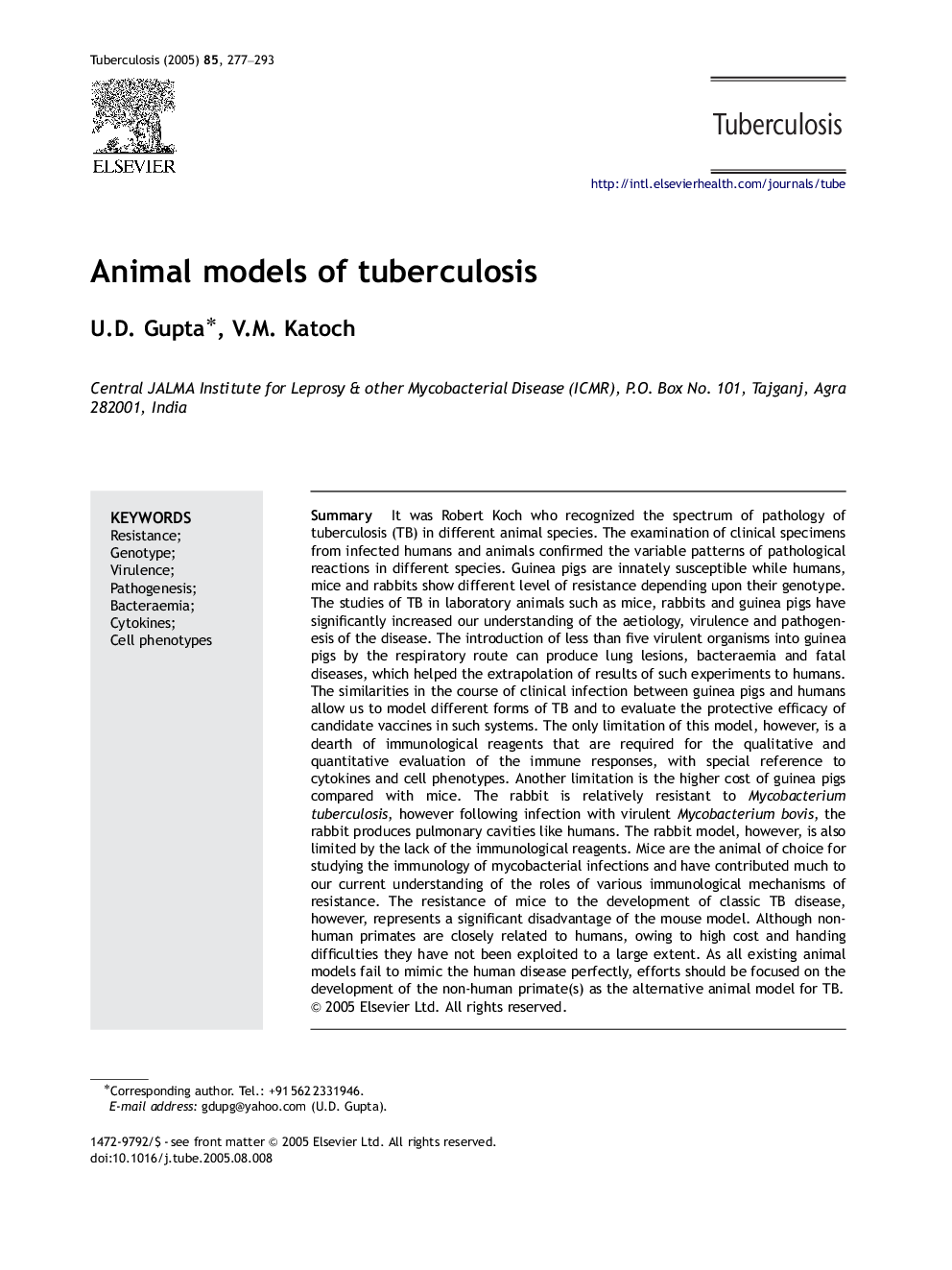| کد مقاله | کد نشریه | سال انتشار | مقاله انگلیسی | نسخه تمام متن |
|---|---|---|---|---|
| 8969060 | 1551714 | 2005 | 17 صفحه PDF | دانلود رایگان |
عنوان انگلیسی مقاله ISI
Animal models of tuberculosis
دانلود مقاله + سفارش ترجمه
دانلود مقاله ISI انگلیسی
رایگان برای ایرانیان
کلمات کلیدی
موضوعات مرتبط
علوم زیستی و بیوفناوری
ایمنی شناسی و میکروب شناسی
میکروبیولوژی و بیوتکنولوژی کاربردی
پیش نمایش صفحه اول مقاله

چکیده انگلیسی
It was Robert Koch who recognized the spectrum of pathology of tuberculosis (TB) in different animal species. The examination of clinical specimens from infected humans and animals confirmed the variable patterns of pathological reactions in different species. Guinea pigs are innately susceptible while humans, mice and rabbits show different level of resistance depending upon their genotype. The studies of TB in laboratory animals such as mice, rabbits and guinea pigs have significantly increased our understanding of the aetiology, virulence and pathogenesis of the disease. The introduction of less than five virulent organisms into guinea pigs by the respiratory route can produce lung lesions, bacteraemia and fatal diseases, which helped the extrapolation of results of such experiments to humans. The similarities in the course of clinical infection between guinea pigs and humans allow us to model different forms of TB and to evaluate the protective efficacy of candidate vaccines in such systems. The only limitation of this model, however, is a dearth of immunological reagents that are required for the qualitative and quantitative evaluation of the immune responses, with special reference to cytokines and cell phenotypes. Another limitation is the higher cost of guinea pigs compared with mice. The rabbit is relatively resistant to Mycobacterium tuberculosis, however following infection with virulent Mycobacterium bovis, the rabbit produces pulmonary cavities like humans. The rabbit model, however, is also limited by the lack of the immunological reagents. Mice are the animal of choice for studying the immunology of mycobacterial infections and have contributed much to our current understanding of the roles of various immunological mechanisms of resistance. The resistance of mice to the development of classic TB disease, however, represents a significant disadvantage of the mouse model. Although non-human primates are closely related to humans, owing to high cost and handing difficulties they have not been exploited to a large extent. As all existing animal models fail to mimic the human disease perfectly, efforts should be focused on the development of the non-human primate(s) as the alternative animal model for TB.
ناشر
Database: Elsevier - ScienceDirect (ساینس دایرکت)
Journal: Tuberculosis - Volume 85, Issues 5â6, SeptemberâNovember 2005, Pages 277-293
Journal: Tuberculosis - Volume 85, Issues 5â6, SeptemberâNovember 2005, Pages 277-293
نویسندگان
U.D. Gupta, V.M. Katoch,